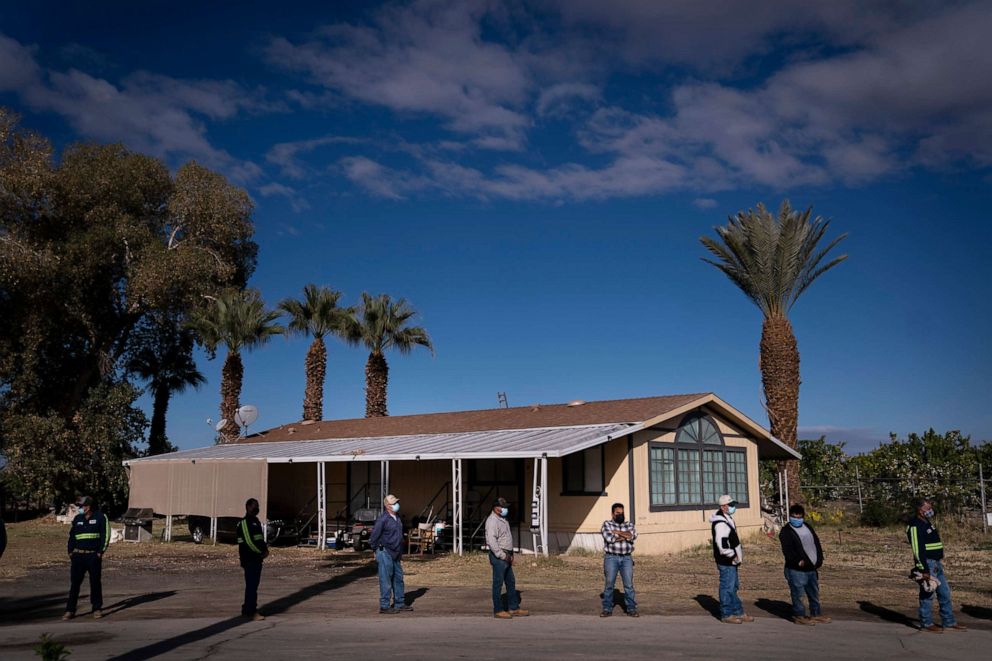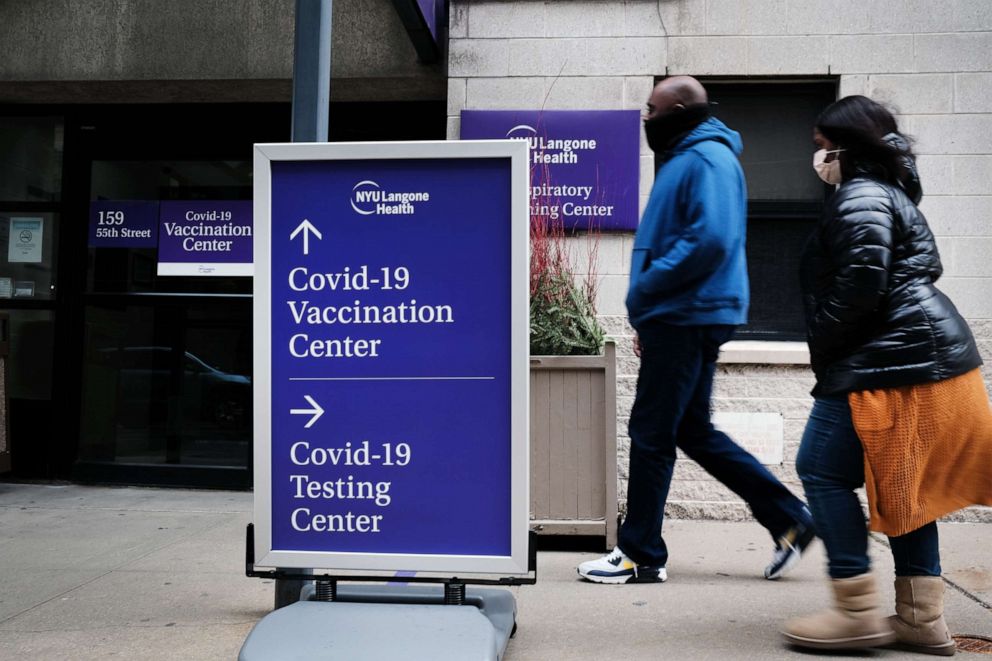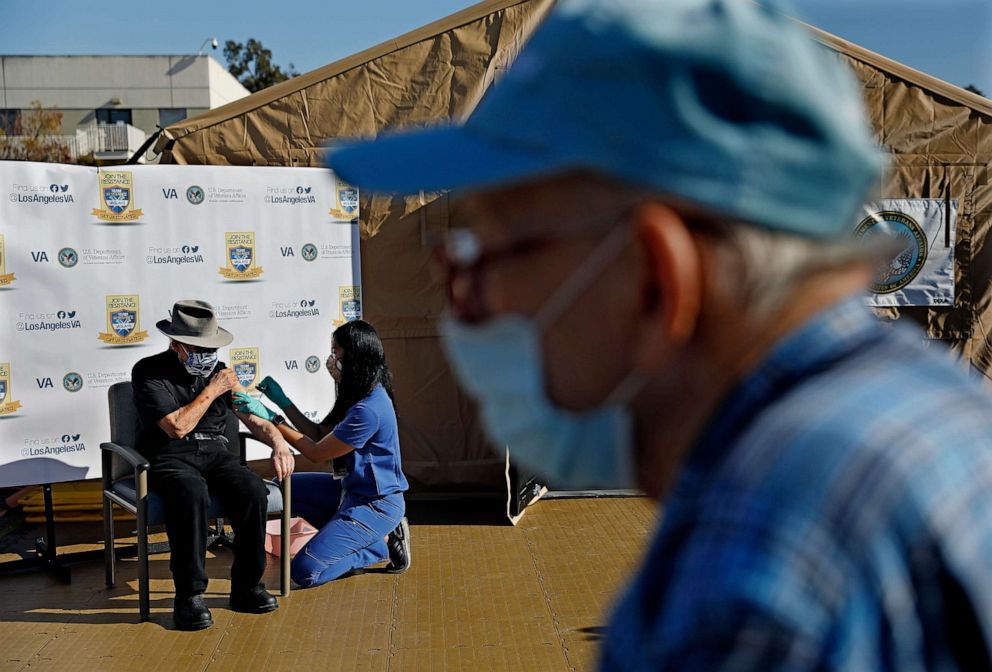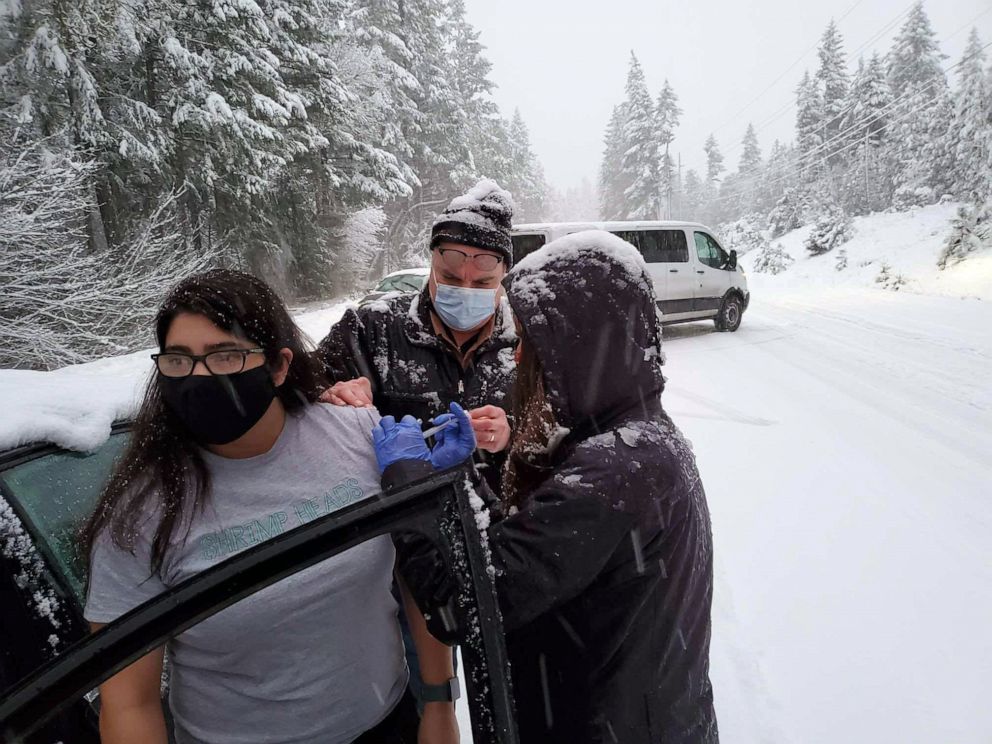5 ways to double down on accelerating COVID-19 vaccinations: Opinion
More needs to be done to make vaccination more efficient and effective.
The COVID-19 crisis is getting worse each day, but we see glimmers of hope like declining hospitalizations.
The Biden administration has warned that it is likely that more than 500,000 Americans will die from the virus by the end of February. At the same time, new, more contagious strains of the virus are spreading across the country, raising concerns about a new surge.
Wearing masks, washing hands and social distancing are all proven to keep people from getting infected. But in the end, the only way we will truly beat back this disease is to vaccinate as many people as possible in the shortest time possible.
Under any circumstances, this would be a difficult task. But with distrust of the vaccine prevalent in many communities -- and especially in some of the communities that have been hardest hit by the virus -- it is essential that we combine our vaccination efforts with our efforts to persuade people that COVID vaccines are safe, effective and essential to their health.
Even as the Biden administration begins to enact its plan to accelerate vaccinations, we need to double down on the five actions below to make the process more efficient and effective.

1. Enlist the aid of faith-based leaders to build trust in the vaccine and help distribute it widely. A recent study by the Pew Research Center found that about 70% of Americans say that religious leaders "care about people like them 'all or most' or 'some of the time.'" Clergy members are trusted members of their communities, which means they are perfectly positioned to help build confidence in the vaccine among their congregants. Knowing this, officials and health care leaders should work with clergy members to help them understand the vaccine and its effectiveness so they can communicate those concepts to their congregants. Faith leaders sharing videos of their efforts can go a long way towards building confidence.
What is more, many churches and other religious organizations have access to parking lots, gyms, and other facilities that can be used to distribute the vaccine. By offering these trusted spaces as vaccine distribution centers, clergy could lend their voices to the vaccination campaign and provide safe locations in the hearts of many American communities for their distribution.

2. Enlist the aid of other community leaders of influence. Biden has promised to launch a locally focused public education campaign to overcome public mistrust of vaccines and reassure people of its effectiveness. This is especially important in at-risk communities, where the virus has had a disproportionate effect on residents.
We can expect posters at bus stops and other key access points in communities where people live, work, learn, worship and commute. But the key to success in rolling out this strategy will be to enlist and raise up the voices of influential members of these communities. That means partnering with local officials, community organizers and other people with influence to demonstrate that COVID-19 vaccines are safe and effective.
3. Create messaging around vaccines that is linguistically and culturally appropriate. It can be difficult to understand some of the language and medical terms that are often used to describe COVID-19 and vaccines. Studies show that trust in the vaccine is lower among people whose first language is not English -- and that has a lot to do with simple understanding. For this reason, it is essential not only that printed materials be made available in many languages, but that the health care workers and community members charged with delivering the vaccine are able to speak the language of the people they are giving it to. In their interim playbook from October 2020, the CDC has reinforced this idea.

4. Distribute the vaccine through mobile clinics and Federally Qualified Health Centers (FQHCs).None of the vaccines that have been approved for use or are in development require that they be distributed in a hospital setting. Church parking lots, civic centers, and even laundromats are all located in the heart of many American communities and provide ideal locations where healthcare workers operating out of mobile clinics can easily distribute vaccine doses. The National Guard is setting up mega sites with the engagement of FEMA and we are seeing an opportunity to target underserved communities and meet vulnerable populations where they are at.
Likewise, FQHCs serve more than 30 million people each year. That is one in 11 people. Many are people of color and others live-in rural communities. The clinics already play an important role in keeping communities healthy. Mobile health vans already serve the most vulnerable hard to reach populations, providing critical preventative services including route immunizations. The Biden administration has indicated that it will direct vaccine supplies to these clinics and engage their dedicated staffs to launch vaccination programs.

5. Call out inspiring examples of how people are delivering vaccines. It is not enough to talk about the vaccine. To increase people's comfort with it, we need to show people getting it and spread the word of the inspiring work being done by health care professionals across the country to deliver it. One great example: the team of one pharmacist, one medical doctor and two nurses who traveled by plane, sled and snowmobile to deliver the vaccine to people across rural northern Alaska. Their story inspires us and reminds us that, in order to stop the devastating spread of COVID-19, we must commit to taking every possible action to vaccinate people in every community across the country to the last mile.
Jay Bhatt is an internal medicine physician, an instructor at the University of Illinois School of Public Health and an ABC News contributor. Dr. John Brownstein is an ABC News contributor and chief innovation officer for the Boston Children's Hospital and a professor of epidemiology at the Harvard Medical School. The opinions expressed are not those of ABC News.




